Ry X is an Australian singer/songwriter/musician who has been recording and performing live all over the world since 2006. He's been garnering critical attention over the past few years, with his smooth voice and a pop-ish, hypnotic musical style that's shot through with melancholy and dark undertones.
Today's song, "YaYaYa" comes off his third studio album, which was released in March of 2019. It's a beautiful piece of music, and its video is full of engaging visuals.
YaYaYa (2019)
Starring: Ry Cuming and Kayten Schmidt
Directors: Dean Bradshaw and Ry Cuming
Rating: Eight of Ten Stars
For information on Ry X's current tour schedule, what else he might be up to, and more music videos, click here. Kayten Schmidt's website can be visited here.
Monday, August 31, 2020
Sunday, August 30, 2020
The first horror movie?
The Cook's Revenge (1900)
A couple weeks ago, I posted about "The Temptation of St. Anthony", a film that has been described as the first religious movie. Upon watching "The Cook's Revenge", from the same filmmaker, I wonder if he can also be credited with making the first straight-up horror movie?
What do you think? Is this film that opens with a cook trying to force his sexual attentions upon a waitress and ends with a brutal murder the first horror film? It's surreal and darkly comedic, as are many of Méliès's films, but the action here is something that would be perfectly at home in one of the "Evil Dead" films or series episodes. It's not even a minute long, so how about your check it out below and tell me what you think, either in the comments section, or on my Facebook page.
Starring: Georges Méliès and Jeahanne d'Alcy
Director: Georges Méliès
Rating: Nine of Ten Stars
The accidental decapitation of an evil cook (Méliès) is only the beginning...
Director: Georges Méliès
Rating: Nine of Ten Stars
The accidental decapitation of an evil cook (Méliès) is only the beginning...
A couple weeks ago, I posted about "The Temptation of St. Anthony", a film that has been described as the first religious movie. Upon watching "The Cook's Revenge", from the same filmmaker, I wonder if he can also be credited with making the first straight-up horror movie?
Georges Méliès was the first filmmaker to recognize the medium's use for telling fantastic stories and creating scenes and events that could not be created without the use of various forms of trick photography. Severed heads that continue to talk (or otherwise behave in bizarre ways) was a mainstay in many of his films, but I've yet to see any of them be quite as gruesome and horrific as what we have in the film embedded below.
Saturday, August 29, 2020
Saturday Serial: Jenna of the Jungle
Continuing Don Hudson's "Jenna of the Jungle" (and including a random bonus jungle girl afterwards). Click on any panel for a larger version, and come back next Saturday for Part Sixteen.
JENNA OF THE JUNGLE: PART FIFTEEN
By Don Hudson
By Don Hudson
To Be Continued...
Girls of the Jungle
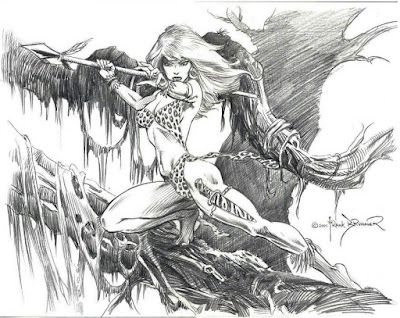 |
| By Frank Brunner |
Friday, August 28, 2020
Thursday, August 27, 2020
'Be Human' addresses animal cruelty with bluntness and humor
Be Human (1936)
Starring: Mae Questal (voice of Betty Boop) and Jack Mercer (voices of Grampy and Neighbor)
Directors: Dave Fleischer and Myron Waldman
Rating: Eight of Ten Stars
Outraged at the extreme abuse her neighbor heaps upon pets and farm animals alike, Betty (Questel) calls animal shelter operator and animal rights champion Professor Grampy, who knows exactly how to deal with such a human monster.
In 1935, the Motion Picture Production Code forced the Fleischer Studios to tone down the adult humor that once given their Betty Boop cartoons a sharp edge, and they subsequently became less popular with movie-goers. Naturally, steps were to reverse the downturn.
As a character, Betty made made to leave her wild days behind and become a responsible career woman and/or a homemaker. As a commercial property, producer Max Fleischer tried to rekindle Betty's dwindling popularity by shifting her appeal to a younger audience. Despite everyone's best efforts, Betty's star continued to fade. I don't think there's a clearer sign of this than today's subject. As the instrumental version of Betty's long-time theme plays, viewers are shown a title card that reads "Grampy in Be Human" in large type and "A Betty Boop Cartoon" in a much smaller typeface that almost blends into a graphic element on the left side of the screen. Not only is Betty given less marquee space than a member of her supporting cast, but she is almost rendered invisible.
Once the cartoon really gets going, however, things are little different. Betty leads off singing a song that spells out the story's theme--be kind to animals. Her hateful neighbor then engages in a string of terrible acts of animal abuse, up to beating a chicken to death for not laying eggs on command. Betty is then the driving force in bringing Professor Grampy onto the scene... although it's all Grampy when it comes to making the animal abuser pay, all while harnessing the power of his punishment to make animals happy.
"Be Human" is squarely focused on a strong message opposing animal abuse, and it makes its points without subtlety. I suppose those who fear they may be "triggered" by cartoon scenes of animal abuse should give this film a pass, as should those who think animal abusers shouldn't just be rounded up and tossed in torture pits. Personally, I think the only ones who would take issue with this cartoon would be those who are prone to abuse helpless creatures... and there are apparently many people out there, since when the Betty Boop cartoons were syndicated to television in the mid-1950s, "Be Human" was pulled from rotation due to complaints that it encouraged vigilantism.
Personally, I think any non-psychopath is going to get a kick out of Prof. Grampy's creative way of making Betty's nasty neighbor pay for his cruelty while generating a benefit for the animals housed at his sanctuary. Although Betty may have been in decline as a commercial property when "Be Human" was released, I think it ranks among the best in the series, and I highly recommend that you take a few minutes to check it out right now.
Wednesday, August 26, 2020
Wonder Woman Wednesday
Tuesday, August 25, 2020
On her birthday, we remember Ruby Keeler...
… and her life-long struggle with Cathedra-Caudexia, a condition that often goes undiagnosed even today. As a result, she was literally unable to fully comprehend how to use chairs, stools, or benches.
For reasons that are poorly understood, this ailment often afflicts those with a talent for activiities that involve music, such as singing, dancing, or playing instruments. Another famous sufferer of Cathedra-Caudexia was Ann Miller.
Monday, August 24, 2020
Musical Monday with Nickleback
It's the Canadian rock band that people love to hate... and they're bringing an amusing animated video for their cover of "The Devil Went Down to Georgia"! (Check it out... and don't be startled by the splashes of color.)
... come to think of it, this is the third week in a row where the Musical Monday selection has included a little bit of color. Maybe we need to change to header to "A Place Where ALMOST Everything is in Black and White"?
Sunday, August 23, 2020
'Bonnie Scotland' is a bit of a mess
Bonnie Scotland (aka "Heroes of the Regiment") (1935)
Starring: Stan Laurel, Oliver Hardy, William Janney, June Lang, James Finlayson, Anne Grey, Vernon Steele, David Torrence, and Mary Gordon
Starring: Stan Laurel, Oliver Hardy, William Janney, June Lang, James Finlayson, Anne Grey, Vernon Steele, David Torrence, and Mary Gordon
Director: James Horne
Rating: Six of Ten Stars
Stan and Ollie (Laurel & Hardy) accidentally join a Scottish regiment in the British military and are sent to India where they are assigned to a dangerous mission.
Although "Bonnie Scotland" is, in theory, a feature film, it feels more like two unrelated scripts for short films that were cobbled together with a romance plot but no one could be bothered to tie it together with a proper ending.
"Bonnie Scotland" starts with Laurel & Hardy arriving in Scotland to claim Stan's inheritance from his wealthy grandfather--which turns out to be far less than they were hoping for. Mishaps follow, and the pair end up joining the army, which leads to the second half of the film where they're in India for an adventure that mixes broad military humor with sinister local intrigues.
The plot line that the two halves together involves Stan's half-sister, Lorna (June Lang), who's inherited the bulk of the estate, her romance with a law clerk (William Janney), and the scheming aunt (Anne Grey) who is trying to trick her into marrying her ward, Colonel MacGregor (Vernon Steele). As these romantic plots go, this one is well put together, with all the characters actually being interesting and ones the viewer cares about. They're even different from the stock figures you might expect, especially the two romantic male leads, with the main boyfriend not being the usual pretty face with no character, and the secondary one being a surprisingly decent and honorable man. Unfortunately, we don't get to see how it all ultimately turns out, because the film ends without this plot line even being close to a resolution.
"Bonnie Scotland" ends on an elaborate sequence and series of jokes and gags where Stan and Ollie narrowly avoiding execution at the hands of a local warlord. Literally. As the sequence is at its wildest, the film just ends. Not only is the romantic plot and the characters involved not brought to a conclusion, but we're even left in the dark about the fate of the characters who were taken prisoner with Stan and Ollie (one of whom is Lorna's love interest). If there ever was a film that needed another five or ten minutes of running-time--and a production team that cared about telling a coherent story--then this is it. (It's a doubly regretful that such a mess was made of the film's story, because all the characters in the romance story line are interesting.)
For fans of Oliver Hardy and Stan Laurel, this film delivers. They play the characters we know and love, and they do the gags we're familiar with. They even work in a goofy dance routine. If you like films that poke fun at the military, you will also find something to like here. If you want a film that delivers a satisfying story, you might want to take a pass on this one, and instead turn to some of Laurel & Hardy's short films. They have all the humor but they typically deliver a more solid story.
That said, I need to mention that "Bonnie Scotland" was a huge success when it was released in 1935; it was Laurel & Hardy's highest grossing picture. So, clearly, not everyone is annoyed by the sloppy story constructon... perhaps not anyone but me.
And speaking of 1935, I am posting this review on August 23, 2020, 85 years to the day after "Bonnie Scotland" debuted in theaters.
Saturday, August 22, 2020
Saturday Serial: Jenna of the Jungle
Continuing Don Hudson's "Jenna of the Jungle" (and including a random bonus jungle girl afterwards). Click on any panel for a larger version, and come back next Saturday for Part Fifteen.
JENNA OF THE JUNGLE: PART FOURTEEN
By Don Hudson

By Don Hudson

To Be Continued...
Girls of the Jungle
 |
| By Paul Abrams |
Friday, August 21, 2020
Firearms Friday with Clones?
We're spotlighting two actresses today who look so much alike that we were very careful about making sure they were indeed two different women.
First, we have Corinne Le Poulaine, a French actress who was born in 1948. She was a popular television actress in her home country, holding starring and recurring roles in numerous series and appearing in more than a dozen made-for-TV movies from the late 1960s up until her retirement from acting in 2009. She passed away in 2015.
Next, we have Diane Baker, an American actress born ten years before Le Poulaine, in 1938. Beginning with "The Diary of Anne Frank" and through her retirement from show business in 2013, Baker worked steadily in a wide variety of supporting roles on television and in movies. Along the way, she branched out into producing, and she accumulated ten producer credits in addition to her 123 acting credits.
Do these two actresses look alike, or are we just really bad with faces? Is Corrine Le Poulaine a clone of Diane Baker? Do they share a common ancestor? Do all white women look alike? Or are we truly just bad with faces? Why don't you let us know in the comments?
Wednesday, August 19, 2020
Tom and Jerry meet 'Jolly Fish'
Jolly Fish (1932)
While relaxing on the lake, Tom and Jerry observe the strange life of the creatures who dwell in the water... before they decide to do a little fishing.

Starring: No one... this is almost a silent movie
Director: John Foster and George Stallings
Rating: Eight of Ten StarsWhile relaxing on the lake, Tom and Jerry observe the strange life of the creatures who dwell in the water... before they decide to do a little fishing.

"Jolly Fish" is five-and-half minutes of nonsense and non-stop gags. There is no plot to get in the way of the action, as we move rapidly through a series of loosely connected events and situations that could only occur in a bizarre cartoon world.
I rank this among the best Tom & Jerry cartoons, because it, for the most part, is just pure, goofy fun. Although it's not the sort of mini-musical that some of my other favorites are, it's got a musical theme that carries through the whole cartoon and which you will probably find yourself humming afterwards. Also, the simple, mostly background-free animation works in this film's favor, because the curious setting for most of the action--under water--and because the characters are constantly moving and doing wacky things so our attention is always focus on them.
As for the details of those "wacky things", this is one those films where too much talk on my part will ruin the fun. I will mention, thought, that there's one rather disturbing bit where underwater parents are trying to teach their baby fish how to swim, and the worm on Jerry's fishing hook tries to lure it away with candy. It's a bit that feels out of place with the rest of the film--but I suppose it wouldn't be a "Tom and Jerry" cartoon if there wasn't some sort of screw-up or misstep somewhere in it.
"Jolly Fish" debuted in theaters on August 19, 1932, the 14th in the Tom & Jerry series. As this post goes live, it's exactly 88 years since movie-goers were first entertained by it. I think it's help up nicely, and I recommend you take a few minutes to check it out, right now, by clicking below.
Tuesday, August 18, 2020
Fun with Religion and Trick Photography
The Temptation of St. Anthony (1898)
Starring: Georges Méliès and Jeahanne d'Alcy
Director: Georges Méliès
First--and most nitpicky--while I love the excitement and enjoyment of creation that oozes from every frame of many of these early Méliès films, actress Jeahanne d'Alcy (as the primary spirit trying to lead St. Anthony astray) almost seems to be having too good a time. She got such a big grin on her face at times that it seems like she's trying keep from laughing. It runs a little contrary to the whole temptress role that she is playing.
Starring: Georges Méliès and Jeahanne d'Alcy
Director: Georges Méliès
Rating: Nine of Ten Stars
Spirits try to make St. Athony (Méliès) to give into lustful, and even blasphemous, desires.
I've seen "The Temptation of St. Anthony" described as the first religious film. I don't know if that is factually accurate, but given the innovative filmmaker who made it, as well as the time at which it was made, it makes sense.
Although this is one of Georges Méliès' early films, and he was still perfecting his techniques, it is also among his best. The pacing is perfect and the trick photography involving spirits appearing and disappearing is very well done. The bit where Christ is replaced on the cross by one of the tempting spirits is particularly impressive--and I can only imagine what the reaction of audiences must have been ca. 1900.
Although this is one of Georges Méliès' early films, and he was still perfecting his techniques, it is also among his best. The pacing is perfect and the trick photography involving spirits appearing and disappearing is very well done. The bit where Christ is replaced on the cross by one of the tempting spirits is particularly impressive--and I can only imagine what the reaction of audiences must have been ca. 1900.
This is one of the best Méliès pieces I've seen yet--and if all religious films were as much fun as this, they'd be more popular both with their target audience and the population at large. There are only two things that make me give it a rating of a Low Nine, and one may just amount to nit-picking.
First--and most nitpicky--while I love the excitement and enjoyment of creation that oozes from every frame of many of these early Méliès films, actress Jeahanne d'Alcy (as the primary spirit trying to lead St. Anthony astray) almost seems to be having too good a time. She got such a big grin on her face at times that it seems like she's trying keep from laughing. It runs a little contrary to the whole temptress role that she is playing.
Second, as the film comes to a close, I feel that it's unclear exactly where the spirits that were tempting St. Anthony came from. My natural assumption is that they were evil in nature, but the final few moments of the film seem to indicate they may well have been angelic in nature. While Divine Mysteries are all fine and good, I'm not a fan of them in movies, not even religious ones.
How about you take a minute--because that's about all it will take--to watch "The Temptation of St. Anthony" and let me know what you think. Were angels trying to set up the pious man, or was he staving off demons? It's embedded below, right here in this post.
Monday, August 17, 2020
In Memory of Yvonne Craig
Musical Monday with Phantogram
Phantogram is a New York City-based musical duo who creates beautiful, multi-layered synth-rock tunes. Today's offering was the single off their 2011 debut album, "Eyelid Movies". The song, "When I'm Small" is haunting and the video supporting it is visually striking, full of stark black and white contrasts and a highly effective use of unexpected splashes of color.
That said, my favorite parts of the video are still the ones where singer and keyboardist Sarah Barthel shakes her boobs at the camera.
Saturday, August 15, 2020
Saturday Serial: Jenna of the Jungle
Continuing Don Hudson's "Jenna of the Jungle" (and including a random bonus jungle girl afterwards). Click on any panel for a larger version, and come back next Saturday for Part Fourteen.
JENNA OF THE JUNGLE: PART THIRTEEN
By Don Hudson
By Don Hudson
To Be Continued...
Girls of the Jungle
 |
| By Frank Frazetta |
Thursday, August 13, 2020
The good and the bad balance each other in the second Perry Mason film
The Case of the Curious Bride (1935)
Starring: Warren William, Margaret Lindsay, Allen Jenkins, Owlin Howland, Donald Woods, Thomas E. Jackson, Claire Dodd, and Barton MacLane
Director: Michael Curtiz
Rating: Six of Ten Stars
Famed defense attorney Perry Mason (William) must uncover the truth buried beneath lies and police corruption when a former lover (Lindsay) comes to him for help with a blackmail case but ends up being accused of murdering the blackmailer.
"The Curse of the Curious Bride" was the second Perry Mason film produced by Warner Bros. during the mid-1930s. Reportedly, although film reviewers said nice things about it at the time, and it did well financially, Perry Mason's creator, Earl Stanley Gardner strongly disliked it. And I think it's clear why.
Although the film is fast paced, features an engaging mystery with stakes that keep getting raised as it goes, and a suspect pool that keeps getting larger instead of smaller as the story unfolds, it spends too much time trying to be a comedy. From banter that isn't entertaining, to scenes that are supposed to be funny but are mostly just dumb, and renaming and reshaping of Paul Drake into the third-rate comic relief Spudesy Drake, just about every attempt at humor in this film falls flat and just lays there on the floor, stinking like a dead fish in the sun. They only supposed-to-be-funny bits that come close to working is when Perry Mason is being overly dramatic and flamboyant in front of newspaper reporters.
It's a shame that the filmmakers decided to lean so heavily on badly done comedy in this picture, because, unlike so many other Perry Mason tales, this one gives a lot of insight into what he does for fun and who he spends time with outside of the law offices and courtrooms. In some ways, Mason feels like a more fully rounded character in this film than he did even after the total of two decades of television series and made-for-TV movies starring Raymond Burr. This aspect, combined with the fact that the film features a great cast, which could have made this a great Perry Mason movie is why I'm giving it a Six instead of the Five it probably deserves.
Another quirk of the film is that it never enters a courtroom; in fact, the case at the center of the film never even makes it to trail. While the concluding "action" doesn't always take place in a oourtroom in Perry Mason stories, there's at least some sort of legal proceeding at some point. Here, the closet we get is Mason meeting with the District Attorney, in a scene that's more there to underscore the corruption of the D.A. and the police department more than anything else.
And speaking of the corrupt police department... corruption is another aspect of this film that's unusual when compared to other Perry Mason screen adventures I've seen. While the police and prosecutors are often shown as either dimwitted, lazy, or just unwilling to look beyond their initial conclusions when it comes to getting their convictions, they aren't usually out-and-out corrupt like they are here. For example, the police detectives don't just go where the evidence takes them here--they all but frame their prime suspect for murder while the prosecutor prevents Mason from seeing her. (On the other side of the coin, however, Mason engages in corruption to a degree that I've also not seen any screen incarnations do up to this point. While I'm used to Mason playing a bit loose with the spirit of the law or bending procedural rules, and even the law, almost to the breaking point, he goes well beyond that in this film.)
Some of the elements which seemed out of place to me probably did not appear that way to audiences in 1935. Corrupt police and prosecutors were the norm in detective films of the day, and the Perry Mason Formula didn't have 85 years of development behind it like it does now. (And, for that matter, the corruption of the justice system that exists everywhere in this movie might be something that will allow newcomers to Perry Mason--via the excellent series that recently ran on HBO.)
"The Case of the Curious Bride" in included with five other Perry Mason films that were produced by Warner Bros. in the 1930s. It's a reasonable priced set, and I think it's worth checking out for Perry Mason fans, old and new.
Wednesday, August 12, 2020
Wonder Woman Wednesday
Subscribe to:
Posts (Atom)









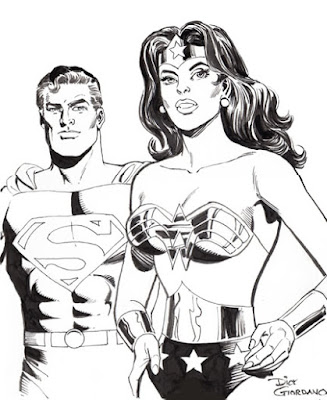





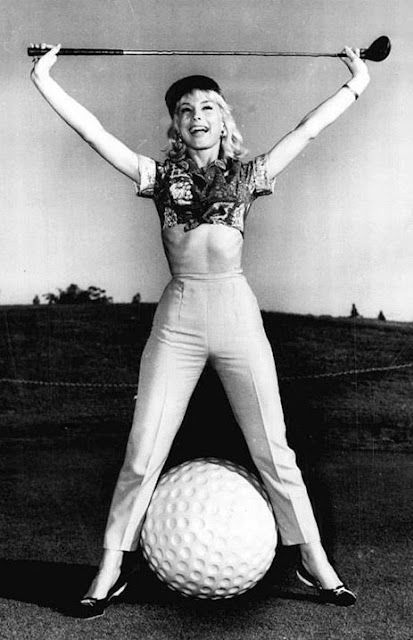







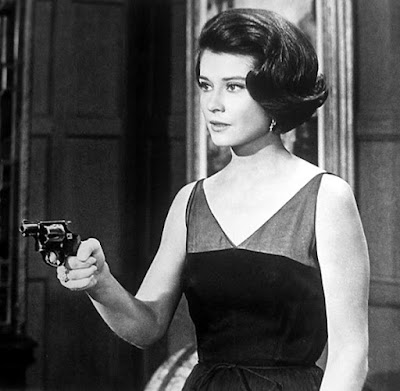



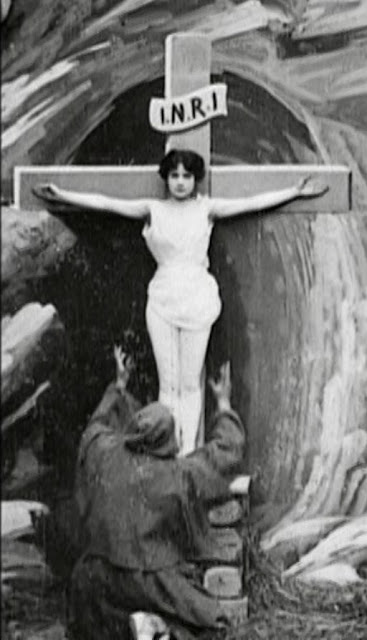


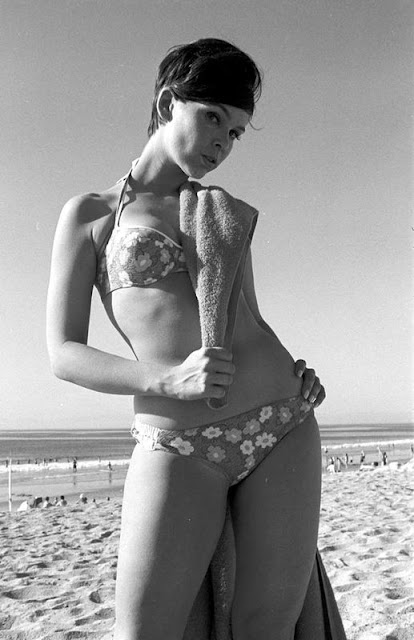
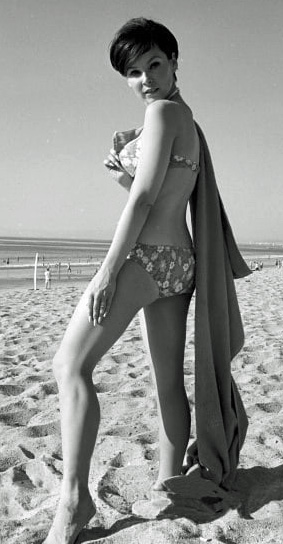

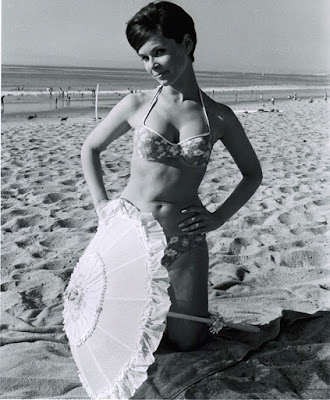


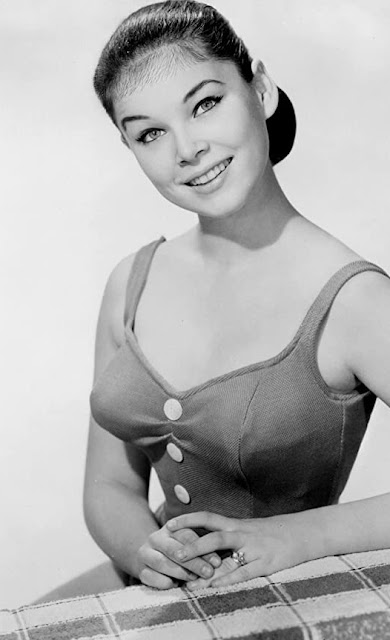










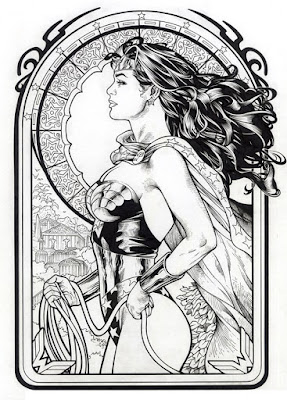






.jpg)













.jpg)
